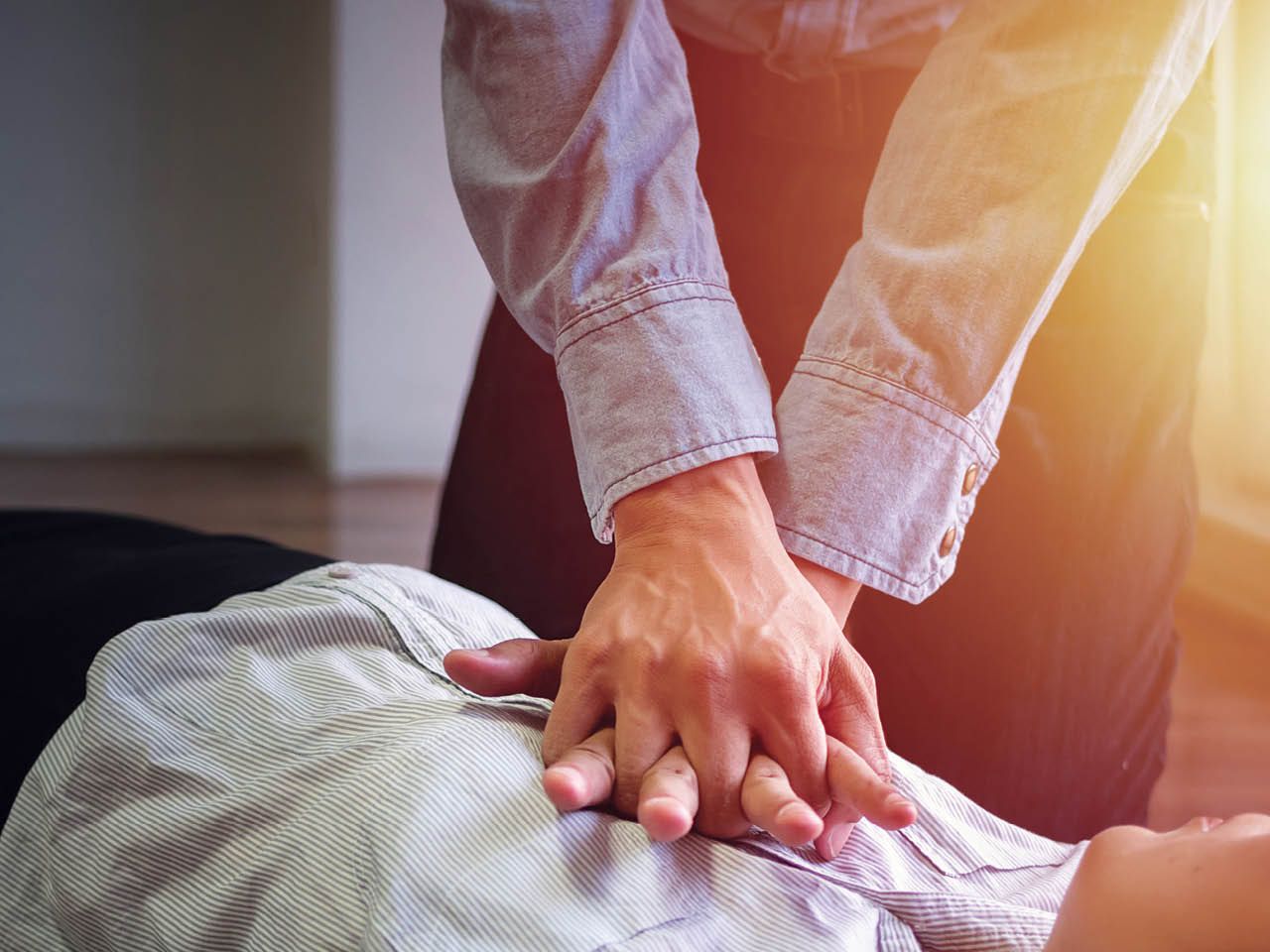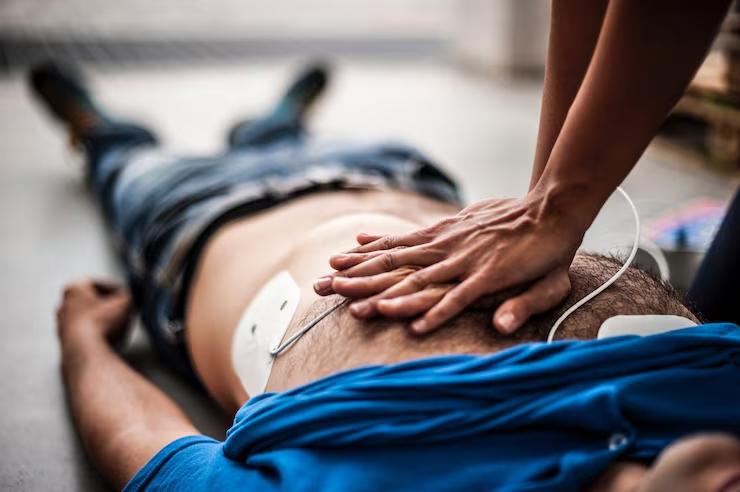Saturday food drive, senior-care visit, and neighborhood sports day are days where community work puts you around people who count on quick help when something goes wrong. The gap? Most volunteers aren’t sure what to do in those first minutes before an ambulance arrives. That’s where a simple, structured skill set makes all the difference.
CPR certification gives community volunteers and nonprofit teams the confidence to act, recognizing cardiac arrest, starting high-quality compressions, and using an AED if one is available. This guide walks you through how to get certified so you show up not just willing to help, but ready.
What Is CPR Certification?
CPR stands for cardiopulmonary resuscitation. It is a method that trains people to assist someone whose heart or breathing has suddenly stopped. During CPR training, learners practice skills like:
- Chest compressions
- Rescue breaths
- Automated external defibrillator
Some CPR courses teach basic first aid and how to check a person’s condition safely. The training includes practical exercises with guidance online from instructors, helping volunteers or staff gain confidence in performing each step correctly. It prepares individuals to respond quickly and confidently, giving help right away while waiting for professional assistance.
CPR training usually lasts for about two years. After this period, individuals must renew their training to maintain up-to-date skills and follow current guidelines. CPR certification is important for more than just healthcare professionals. It enables bystanders to respond immediately and provide assistance, offering support whenever a medical situation arises.
Components of a CPR Training
CPR training teaches the knowledge and hands-on skills needed to act in critical situations. It guides participants to stay focused, follow the steps correctly, and handle the situation calmly. After finishing the training, participants know what to do and feel prepared to step in when someone needs help.
The following key components are included:
- Assessing the situation: Understanding how to quickly see what is happening and decide what to do first.
- Chest compressions: Learning how to press on the chest correctly and keep a steady rhythm.
- Rescue breaths: Performing effective breaths to support breathing alongside compressions.
- Automated external defibrillator (AED) use: Learning how to use the device safely and correctly.
- Adult, child, and infant techniques: Learning how to adjust the steps for people of different ages and sizes.
- Scenario-based practice: Simulated exercises to build confidence and decision-making skills.
Who Should Get CPR Certified?
Many medical emergencies happen outside the home, often in places where people gather or work. According to the American Heart Association, about 18.2% of medical emergencies occur in public settings. This highlights the importance of having trained individuals ready to act, especially community volunteers and nonprofit staff who are often nearby and able to provide immediate assistance.
CPR skills are not only for medical professionals. Anyone can learn to be prepared to assist when a situation requires immediate attention. CPR training is highly beneficial for individuals working with community programs and nonprofit organizations. They frequently find themselves in situations where quick assistance can truly help someone.
Several nonprofit organizations encourage or require their staff and volunteers to complete CPR certification. This training ensures that teams have the skills and confidence to respond appropriately when unexpected health issues arise.
The Role Of CPR Training In Community & Nonprofit Work
Community volunteers and nonprofit staff often find themselves in situations where immediate help can prevent serious harm. Knowing CPR helps volunteers take quick action instead of waiting for professional help. Proper training allows volunteers to take meaningful action to help keep their communities safe. It helps them respond to unexpected situations with confidence and care, making their support more effective and comforting for the people they assist.
Here is how CPR training plays a role in community and nonprofit work:
- CPR-certified volunteers act as the first line of support, providing immediate care until professional help arrives so that critical time is not lost.
- Trained volunteers can respond quickly during community events, helping manage health situations and keeping people calm and safe.
- Training helps build trust within the community. People feel safer and more confident taking part in programs and events when they know volunteers are trained in lifesaving skills.
- In underserved areas, professional help often takes time to arrive. During that time, CPR-trained volunteers can provide help and support to people who need it.
Benefits Of CPR Certification
Community volunteers and nonprofit staff frequently come across moments that demand immediate attention. Learning CPR provides them with practical skills and helps them feel more confident in taking action. It also encourages a careful and prepared approach, so they can handle challenges calmly and effectively.
The following are the benefits of CPR training for community and nonprofit staff:
1. Increased Confidence:
Being trained in CPR allows volunteers to approach urgent situations with a clear plan and steady focus. They know what steps to take, which reduces hesitation and helps them provide timely support when it is most needed.
2. Improved Outcomes:
CPR skills allow volunteers to step in right away and provide care that helps keep a person stable. By performing chest compressions, rescue breathing, or using an AED, they can reduce the risk of the condition getting worse. This early intervention can help the individual until trained medical professionals can take over.
3. Professional Credibility:
Holding a CPR certificate shows that a volunteer or nonprofit worker has taken the time to gain important lifesaving skills. It reassures team members and the people they help, while also building trust within the community in their ability to respond when needed.
4. Stronger Safety Culture Within Teams:
Teams trained in CPR can support each other and work together more effectively during emergencies. Each member knows how to assist and protect those in need, which helps prevent mistakes and ensures faster, safer care.
5. Encouraging Community Participation:
Volunteers with CPR training often motivate others to take the course themselves. By showing how these skills can make a difference, they motivate more people in the community. This gradually creates a network of trained individuals who can act quickly and confidently in urgent situations.

Choosing The Right Course Provider
A certificate from the wrong provider can leave you unprepared and may not even be accepted by employers. On the other hand, a trusted provider ensures that what you learn is reliable, recognized, and useful when it counts. Knowing what to look for in a provider can protect both your career and your ability to help others in emergencies.
Here are a few things you should always look for:
1. Nationally Accepted
A nationally accepted program guarantees that the training is recognized across the country. It ensures the provider follows recognized standards and that your certificate is accepted across workplaces like hospitals, offices, schools, and sports facilities.
2. OSHA-Trained Instructors
Providers with OSHA-trained instructors bring experience and practical knowledge into the class. These instructors make the skills easy to grasp and show you how to use them in real situations.
3. Accredited Courses
Accreditation shows that a course has been reviewed and approved by trusted organizations. It makes sure the training follows the AHA/ECC guidelines and helps you act quickly. If a course is not accredited, you cannot be sure it meets the right standards.
4. Check the Curriculum
A good course explains the steps, when to use them, and how they work in real life. Check the outline before joining. The best providers follow the 2020 Emergency Cardiovascular Care (ECC) guidelines, showing they value quality and credibility.
5. Certification Validity
Every certification has an expiration date, and it is important to know how long yours will last. A valid certificate should be accepted for a clear period, usually two years. Providers who don’t mention this may not be reliable.
Get Your CPR Certification Today
Community volunteers and nonprofit staff play a huge role in supporting those in need. Having CPR skills helps them respond quickly and calmly, giving practical support whenever someone needs help. Learning CPR skills helps volunteers feel prepared, confident, and able to provide calm and practical support. Certification ensures they can step in and assist effectively whenever it is needed.
Take the first step today and explore the CPR certification course to join a network of trained, ready volunteers helping others.



